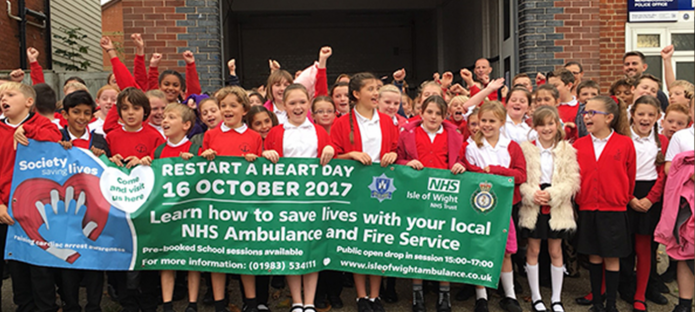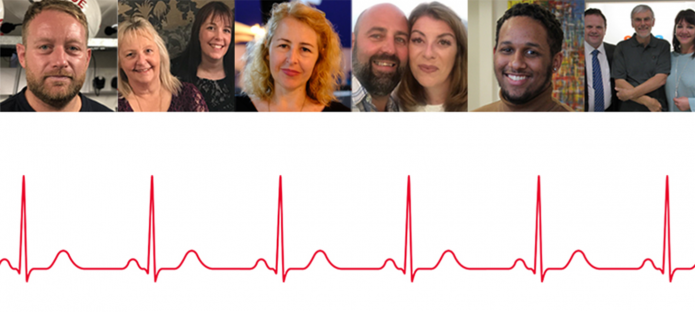
Tuesday, 28 March, 2017 was not meant to be a life-changing day for Roger Baines.
In fact, it started out quite normally. The 51-year-old father of two went to work at the University of East Anglia where he has been a French language and Applied Translation Studies academic since 1996. After working in the morning, Dr Baines headed down to the UEA Sportspark to play in a weekly 5-a-side indoor football game.
During the game, Roger began to feel dizzy. From that moment, he does not remember anything until he heard the paramedics telling him he had had a fall.
Roger had suffered a very unexpected cardiac arrest. Fortunately for him, the quick thinking of his team-mates, and the rapid response of the UEA Sportspark team saved his life. 999 was called and seven trained Sportspark staff worked together to perform life-saving CPR and use the Sportspark’s Automated External Defibrillator (AED). Before the arrival of the Emergency Services, a single shock from the AED was delivered to Roger by the Sportspark team: Chris Lynch, Tom Dart, Luke Coping, James Warren, Matthew Critchfield, Anna Linsmith, and Iain Kermode.
Roger was taken to the local Norfolk and Norwich University Hospital where the dedicated teams stabilised and diagnosed him, eventually implanting an ICD device to help prevent a further cardiac arrest. In diagnosis, Roger learned that, unbeknown to him, he had experienced a ‘silent heart attack’ probably 11 years earlier - an attack which had left him with an arrhythmia and at risk of the cardiac arrest he went on to suffer on the football pitch. Roger spent two weeks in the cardiac unit and has now made a full recovery.

There is no question that Roger is alive today because of the administering of CPR and the AED shock. Had there been no one nearby with CPR training and no AED to utilise, this story would have had a very different ending. It’s a chilling thought for Roger, and he’s now determined to raise awareness of the value of life-saving CPR training and accessible AEDs in public places to make sure everyone has the best chance for survival.
Roger owes his life to the many incredible people who came together to save his life and is keen to emphasise that all the treatment he received at every stage was outstanding. It’s important to him to thank those who didn’t hesitate to take action to save his life.
To further promote lifesaving training, Roger hosted an event, appropriately at the University of East Anglia Sportspark, for Restart A Heart Day 2017. On this day, Resuscitation Council UK, the British Heart Foundation, the British Red Cross and St John Ambulance joined forces with all of the ambulance services across the United Kingdom to educate as many young people as possible in life-saving training.
Want to make a change? Get involved in this year’s Restart a Heart day!
Important facts about CPR and defibrillation:
- When someone has a cardiac arrest, every minute without CPR and defibrillation reduces their chances of survival by 7-10% (1)
- The chance of survival from out-of-hospital cardiac arrest can be increased two-to-threefold by the immediate provision of bystander CPR. (2)
- There are around 60,000 out-of-hospital cardiac arrests in the UK per year. (3)
- AEDs are known to drastically boost survival rates of out-of-hospital cardiac arrests. Defibrillation within 3–5 min can produce survival rates as high as 50%–70%. (4-6)

